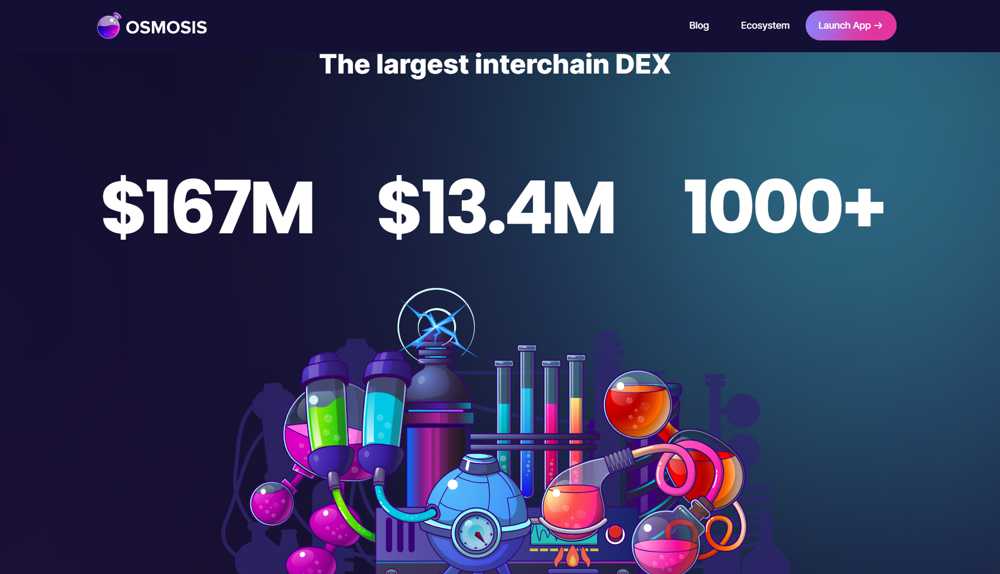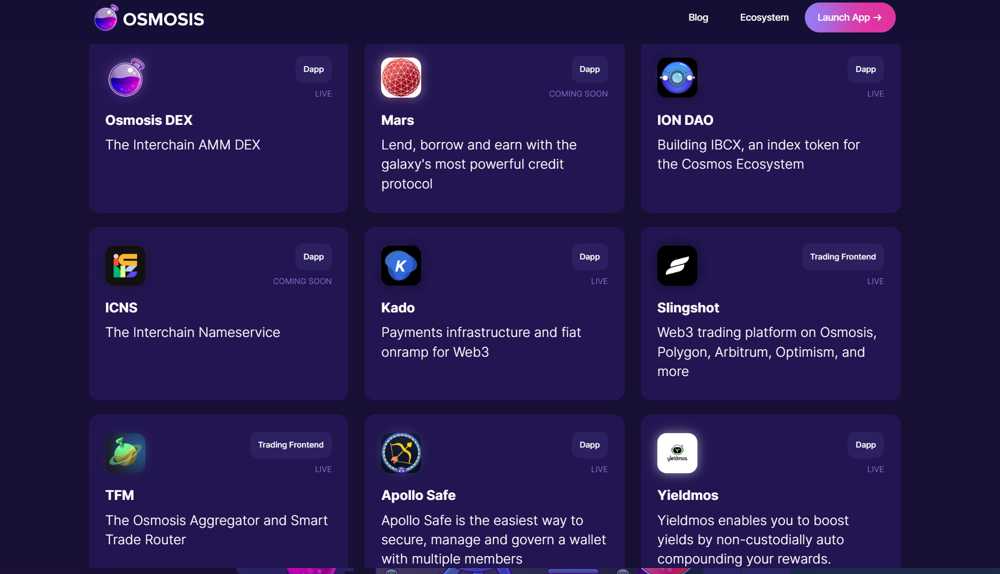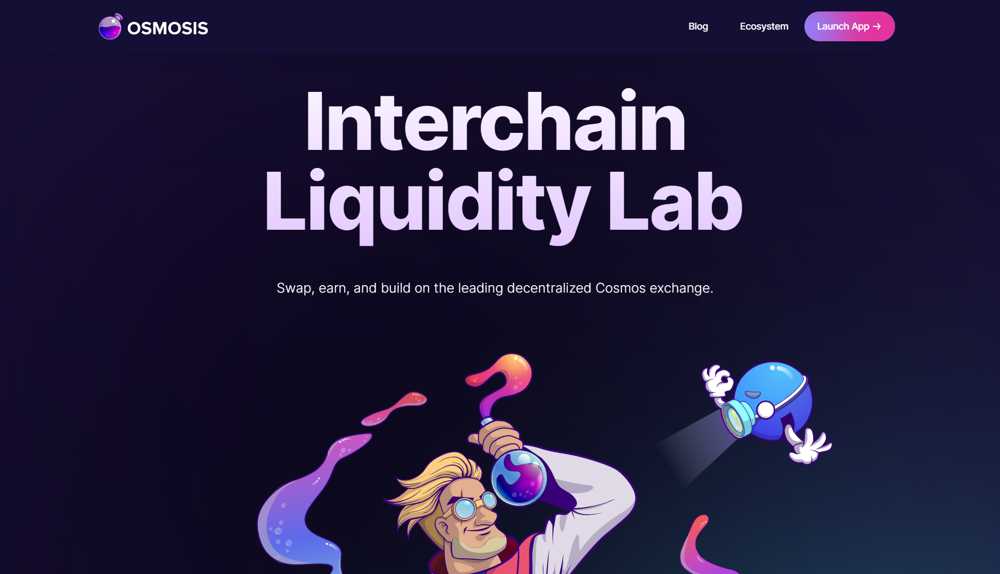Osmosis (OSMO) – What You Need to Know About the Fully Customizable DEX?
Decentralized exchanges have been around for quite some time. These exchanges enable users to trade different crypto assets without sharing their information with centralized authorities. They also provide earning opportunities for investors through liquidity pools and yield farming.
In recent years, developers have introduced a number of unique features to provide a better experience to users. Still, decentralized exchanges have a few limitations that prevent the mass adoption of these exchanges. Osmosis is an innovative decentralized exchange designed to overcome some of its limitations.
What is Osmosis (OSMO)?

Osmosis is a multi-chain decentralized exchange built with the Cosmos SDK. It uses Inter-Blockchain communication to interact with other blockchains available within the Cosmos ecosystem. With this protocol, it enables users to customize different parameters after observing the market conditions.
Features of Osmosis
Osmosis has established sovereign liquidity pools that enable developers to build bespoke automated market makers. Osmosis is currently limited to Cosmos but it has plans to expand its operations to other blockchain networks in the future. Osmosis shares most of its features with Balancer, Uniswap, and Curve Finance because it was inspired by these projects.
But it also offers a few unique features that aren’t available in the traditional DEXs.
Self-Governing Liquidity Pools
Osmosis doesn’t only provide passive income to the liquidity providers but it also keeps them engaged by providing them with decision-making power based on their share. The liquidity providers can earn additional revenue and gain more voting power by locking their tokens for a long time.
Thus, liquidity providers barely migrate the liquidity to an external AMM due to which the platform is secure from vampire attacks. The liquidity providers will be seriously concerned about setting the direction of the pool as it may affect their overall investment. If a user disagrees with the modifications, he can withdraw his funds anytime he wants.
In fact, if a group of people disagrees with the modifications, they can create a new pool with their own strategy.
Customizable Liquidity Pools
Most AMMs offer a limited number of customization in the liquidity pools. But the fact is that a number of factors like slippage, block periods, market volatility, transaction fees, and others play an essential role in determining the price of an AMM trade. The liquidity pools need to accurately respond to market conditions as the Defi market expands.
Osmosis enables users to adjust different parameters based on market conditions. Instead of providing a ‘most acceptable compromise’ value, Osmosis adjusts certain parameters with the help of autonomous experiments. This waives the barrier that’s preventing the mass adoption of AMMs.
MEV Resistance
The sandwiching technique is quite common in the AMMs. The bots and malicious elements use this technique to gain more profit while damaging others. They try to manipulate the market by selling or buying large quantities. Osmosis prevents these kinds of attacks with its threshold encryption.
The platform doesn’t let anyone access the information through which they can manipulate the market.
Superfluid Staking
On traditional AMMs, the users can either stake their tokens or lock them to the liquidity pools. Osmosis has introduced Superfluid staking so that users can take advantage of both these opportunities at the same time. It means the users won’t just earn rewards from staking but they also receive a fraction of transaction fees as a reward.
The platform is earning a higher percentage of rewards as compared to others.
Osmosis Thirdening
Osmosis has introduced the Thirdening to properly cope with inflation. With every thirdening, the issuance rate of OSMO tokens will be decreased by a third. Thus, the staking and liquidity pool rewards will decrease. However, the token’s price will eventually increase due to scarcity.
More Trading Opportunities
Osmosis is a multi-chain DEX. It’s connected to other blockchain networks through the IBC protocol. Therefore, users can trade a wide range of cryptocurrencies on this platform.
Osmosis Brief History
Osmosis was introduced by Sunny Agarwal and Josh Lee in 2021. Osmosis Labs raised around $21 million during the token sale conducted by Paradigm. The project went live at the beginning of 2022 and became quite popular right after its launch. The project’s TVL increased by 100 percent within a few months of its launch.
Although Osmosis Labs prepared the initial code of the project, the project’s further development is now in the hands of the OSMO token holders because Osmosis provides governance power to its token holders.
How Does Osmosis Work?

Osmosis uses a set of liquidity pools to provide trading opportunities for traders. The liquidity providers need to lock their tokens in these pools for a set period of time. The traders can swap different IBC-compatible tokens including ATOM, AKT, ION, LUNA, and more. The swapping fee is determined based on trading size and pool parameters.
A proportion of the swapping fee is transferred to the liquidity providers. Similarly, users are required to pay a transaction fee when they’re requesting a transaction. A small amount of transaction fee is transferred to validators as a reward.
Osmosis Tokenomics
OSMO is the native token of the Osmosis network. With a circulating supply of 492.5 million tokens, OSMO has a market cap of $357 million. It ranks among the 100 best cryptocurrencies in terms of market cap. It has a total supply of 1 billion tokens that will be released in the form of rewards.
Conclusion
Osmosis is a cross-chain DEX that provides plenty of trading opportunities. It also offers more earning opportunities for liquidity providers and stakers. The liquidity providers have the authority to set the parameters of the liquidity pools according to changing market conditions.
If you need more information about how Osmosis works, feel free to get in touch with us.



